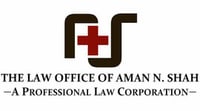Modern cars, trucks and SUVs have a variety of technological features that tend to make them easier and safer to drive. One of these, the backup camera, shows drivers a real-time view of the area behind their vehicles.
If drivers use backup cameras correctly, they may help to minimize accident risk. Unfortunately, though, motorists often misunderstand or forget about the limitations of backup cameras. As a result, these cameras may lure drivers into a false sense of security.
A limited visual field
Since 2018, new cars sold in the U.S. must have a backup camera to comply with federal law. Even the best cameras only offer about an 80-degree visual field, though. Consequently, there are places around the rear of the vehicle that its driver cannot see by only looking at the camera’s screen.
Put simply, if drivers do not check blind spots before reversing their vehicles, they may inadvertently back into a pedestrian, another vehicle or a structure.
A distorted view
Some backup cameras are better than others. Still, many cameras in use today give drivers a distorted view of the space behind their vehicles. If drivers only look at the camera’s screen, objects may appear elongated, compressed or even further away than they really are.
The possibility of a malfunction
Recently, Ford Motor Company made headlines when it recalled more than 600,000 vehicles for faulty backup cameras. Camera screens on these recalled vehicles may go dark, potentially increasing accident risk.
Ultimately, drivers are responsible for backing up safely. If a defective backup camera does not allow them to do this, motorists should exercise additional caution to protect those around their vehicles.



